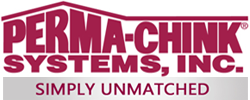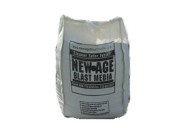 Perma-Chink Systems, Inc
Log & Timber Home Care Experts
Perma-Chink Systems, Inc
Log & Timber Home Care Experts
Michael
For several years our Lifeline™ Advance Topcoats have been an integral part of our exterior finish systems. In addition to prolonging the life of the finish system, Advance Topcoats help keep the exterior surfaces free of dust and dirt, and make them easier to clean. That’s because Advance is designed specifically as a topcoat. Unlike most topcoats on the market, Advance is not just a non-pigmented version of our Lifeline stain. Because we formulate our stains for maximum color retention and adhesion when applied to bare wood, we use an entirely different formulation to meet the performance criteria important in a clear topcoat.
For interiors, we follow the same approach: A pigmented finish designed for adhesion and color fastness, covered with a topcoat specially formulated for protection. Let's go through the options homeowners have to best achieve their desired look.
Inspection Checklist - Downloadable PDF for print
One of the greatest mistakes you can make when applying a new finish to your home is to use inexpensive paint or stain brushes. You will be putting a lot of time, money, and effort into your project and saving a few dollars by using cheap brushes can compromise the beauty and performance of your new finish!
Over the past years we have discovered many things about cleaning wood. First and foremost is that chlorine bleach should never be used to clean your wood. In addition to its potential for damaging wood fibers, its use and misuse contributes to a number of problems including the loss of film adhesion, discolorations due to tannin extraction, and the formation of iron tannates, streaks, blotches, and premature failures of the finish system.
Both M-Balm® and E-Wood® are two component epoxies that are used for repairing soft spots, rot pockets and other types of defects in logs and timbers. Although they can be used individually, they are typically applied as a pair with each product playing a specific role.
We occasionally get calls about repairing spots of finish that have peeled from logs, handrails, etc. In most cases, the peeling is associated with checks or small fissures that have opened up after the finish was first applied. When this occurs, rain water soaks into the bare wood on either side of the check, and when the sun beats on the area the wood turns to water vapor and expands with enough force to push the finish right off of the surface. If the peeling is limited to a few small areas, touching them up is not very difficult.
Neglected log homes occasionally develop sections of logs that have medium or deep pockets of decayed wood that is either very soft, or loose and crumbly. If caught early enough, the pocket may be only a few inches across, but if the decay has been active for a while the pocket may extend a couple of feet or more along the length of the log. If the pocket extends more than halfway through the logs and runs more than a couple of feet, log replacement or at least new log facing should be seriously considered, especially if the log is supporting any weight on top of it. However, there are some repair methods that can work.
For the best performance and lasting beauty LIFELINE™ finishes should only be applied to bare wood surfaces or an existing LIFELINE finish that is still in good condition. To remove an existing finish there are three options: pressure washing along with a chemical finish remover, media blasting or sanding.
Since interior finishes are not exposed to rain, snow, wind, and direct sunlight, long term resistance to weather is not an issue, and homeowners have more flexibility when choosing the color and appearance of interior wood surfaces. However, there are some parameters that need to be followed to take advantage of the benefits of an interior finish, such as preventing odor absorption and making the walls easy to keep clean, while getting the look you desire as well.
All Lifeline™ finishes are water-based, film-forming coatings. Although we refer to our pigmented coatings as “stains,” they do not “colorize” the wood like penetrating oil-based products; they form a film on the surface of the wood, thus protecting the underlying wood from the effects of wind, water, and sunlight. Since they form a film on top of the wood, they rely on proper surface preparation to ensure good adhesion.
New Age Blast Media Available Sizes
Call 1-800-548-3554 to Order
Features
- Made from recycled glass
- Superior to corn, walnut, sand or soda media
